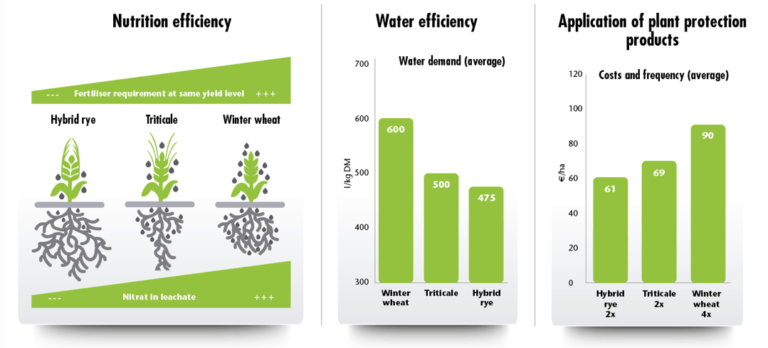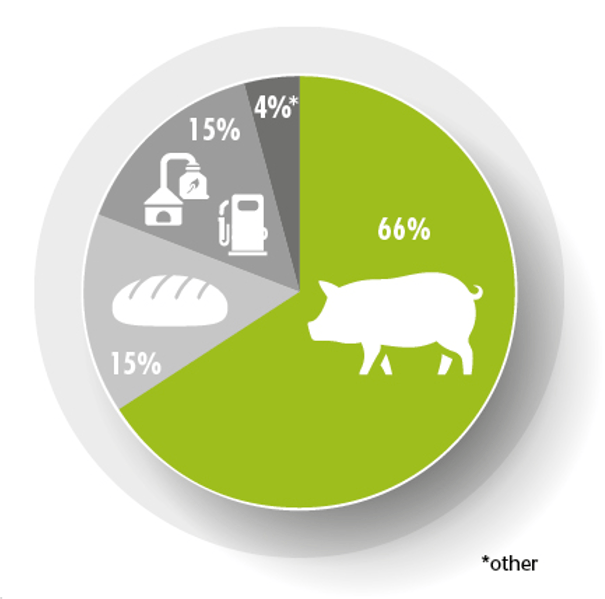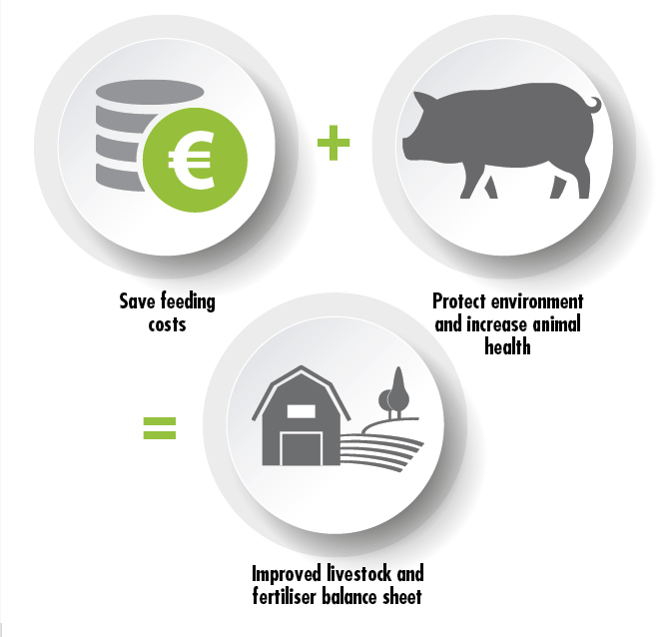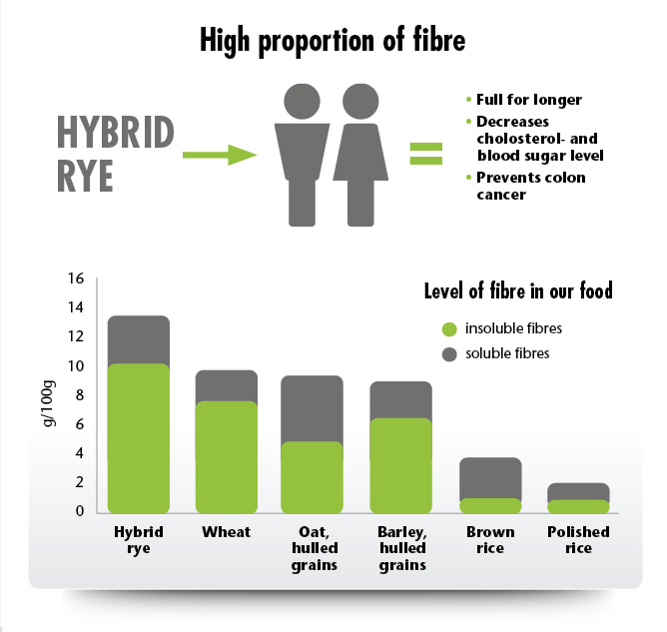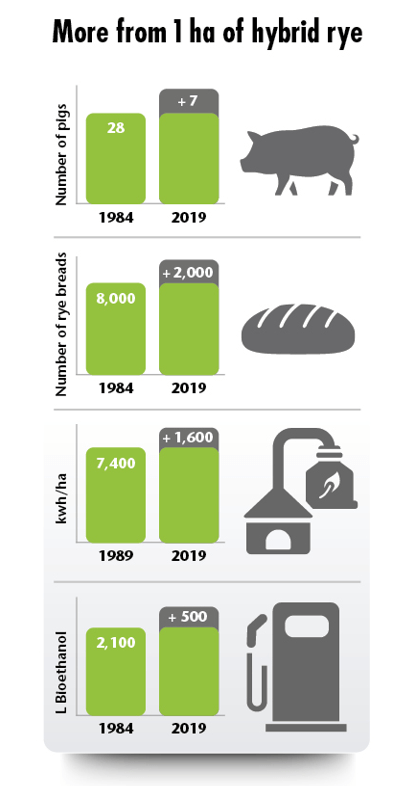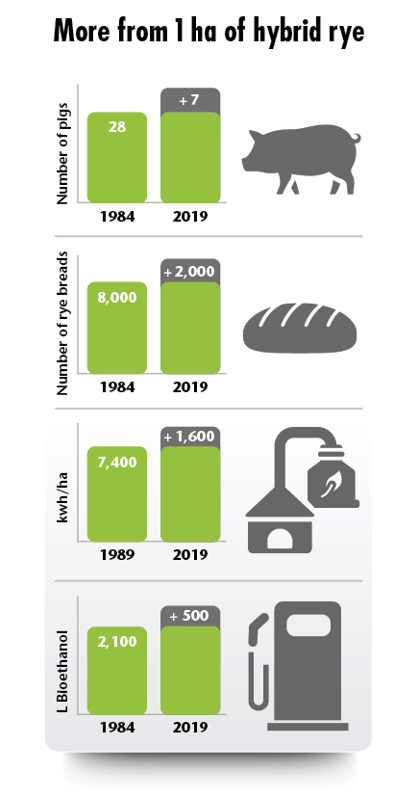HySeed Hybrid Rye: Cost effective and environmentally sustainable
HySeed Hybrid Rye: Cost effective and environmentally sustainable
Key Markets
Benefits of Growing Rye
Use of Rye
Benefits for Animal Feed
Benefits in Human Consumption
Use of Rye
Benefits for Animal Feed
Benefits in Human Consumption
Economy
Breeding Progress
Until about 60 years ago rye had been the most important cereal in Central and Northern Europe, often referred to by our ancestors as “the grain“.
Its performance even on infertile soils and its winter hardiness proved to be very advantageous. Due to agriculture intensification and major progresses in wheat breeding rye has been pushed to weaker and less fertile soils. The cultivated rye area had steadily decreased reaching its lowest point in the late 70s. Basic plant research carried out by the University of Hohenheim provided breeders with a very reliable genetic sterility system for breeding rye hybrids. The first high yielding hybrid varieties were approved in the mid-1980s. SAATEN-UNION is one of the two market leaders in Germany and Europe due to the hybrid rye varieties of its breeding company HYBRO Saatzucht.
SAATEN-UNION varieties provide high and stable yields on more than 280,000 hectares across Europe. Hybrid yields are up to 20 % higher compared to conventional varieties. Thanks to intensive breeding efforts rye also has a higher yield potential than wheat and triticale. Throughout Europe the cultivation area is growing again.
Many producers are not just thinking about increasing their rye area but also consider rye as a useful and important link for future crop rotations. In particular because the unique characteristics of rye offer answers to current and future challenges in grain production: Rye is and remains a quality cereal with a future!
Rye is cost-efficient and resourcesaving! Its efficient nutrient uptake ensures highest yield even under the more stringent requirements of the new fertiliser regulation.
Its good drought tolerance helps it to withstand increasing early summer droughts. Its high resistance to many plant diseases ensures a healthy crop even after the ban of further fungicides. Rye can help to improve cost efficiency in terms of crop and animal production. Nevertheless, rye is underestimated as the economic potential is often not fully exploited – not only in respect of yield but also utilisation and marketability. In regard to use the question of the best farm-specific strategy has to be posed: Cultivation as grain crop, as forage or as wholecrop silage?
Selling, storing or feeding? Is hybrid rye more competitive than wheat or triticale? Which feed rations make sense with rye? When is wholecrop rye silage worthwhile? Against this background this guide aims to make a contribution to profitable production and marketing of rye. Apart from crop management a clever and professional rye marketing/use offers the biggest scope for adjustments.
MyRye – growing with rye is going to analyse these questions step by step and point out operational leeways in order to achieve the best operating results possible. One is already certain: Rye has a future!


